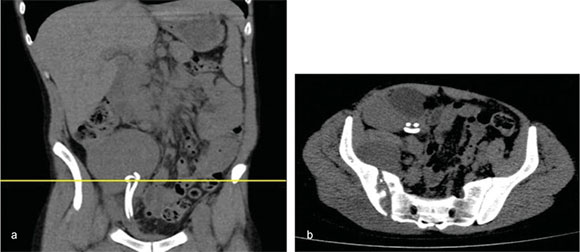Services on Demand
Journal
Article
Indicators
-
 Cited by SciELO
Cited by SciELO
Related links
-
 Similars in
SciELO
Similars in
SciELO
Share
Revista argentina de radiología
On-line version ISSN 1852-9992
Rev. argent. radiol. vol.82 no.2 Ciudad Autónoma de Buenos Aires June 2018
http://dx.doi.org/10.1016/j.rard.2017.04.005
IMAGINARTE
https://dx.doi.org/10.1016/j.rard.2017.04.005
Emoticón en catéter
Emoticon on a catheter
María Paula Segui1
1 Servicio de Diagnóstico por Imágenes, Hospital San Martín La Plata, Buenos Aires, Argentina
Address for correspondence
M. P. Segui, Servicio de Diagnóstico por Imágenes, Hospital San Martín La Plata, Buenos Aires, Argentina (e-mail: mpsegui_89@hotmail.com).
published online
April 2, 2018
Copyright © 2018, Sociedad Argentina de Radiología. Publicado por Thieme Revinter Publicagóes Ltda., Rio de Janeiro, Brazil. Todos los derechos reservados.
![]()
El catéter doble J es utilizado en los trasplantes renales como una forma de prevenir complicaciones urológicas, especialmente las fístulas y estenosis ureterales. Se colocan durante dos o tres semanas y luego se retiran por cistoscopia.
Mostramos un paciente recientemente trasplantado, con doble sistema excretor del injerto renal, que requirió la utilización de dos catéteres doble J (Fig. 1). En la imagen axial la curvatura del extremo proximal de los catéteres nos recuerda un emoticón con cara feliz (Fig. 2).

Fig. 1 Dos catéteres doble J.

Fig. 2 Emoticón con cara feliz.














